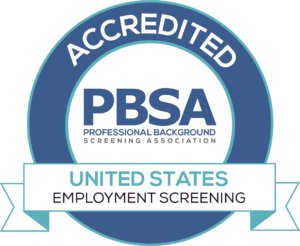Each year brings a fair amount of regulatory change. As workplace safety, remote working, increased cost of living, mental health, and inclusion become increasingly relevant when it comes to policy, HR departments are going to begin to see more changes than before.
We have made a short list of notable 2024 regulatory changes that will impact a large number of employers. While not immediately linked to hiring, these policies will impact how employees are onboarded and retained.
As always, employers have a duty to be aware of and comply with all regulations and should revisit their internal policies often to account for any updates.
California Regulatory Changes
New Sick Leave Policy
As of January 1, 2024, California employers are now required to give 40 hours or five days (whichever is greater) of paid sick leave to employees who have worked 30 days with the employer. This policy includes part-time employees. Note that the employer can still require the employee to work for 90 days before claiming PTO.
30-Day Notice to Remote Workers
California employers must now provide remote employees a 30-day written notice if they require a return-to-office. Because of reasonable accommodation policies, employees will reserve the right to petition for a continuance of their remote working arrangement as an accommodation for a disability.
Save the Date, New York
Clean Slate Act
As was seen in Michigan this past year, New York has enacted a clean slate policy of its own. This policy, going into effect November 16, 2024, will call for the automatic sealing of certain criminal records after a certain passage of time from the imposition of sentence, release from parole or probation, and if the defendant does not have a current charge pending. This will not change the employer’s responsibility to the FCRA.
It is worth noting that when this policy went into effect in Michigan, the courts encountered significant delays that extended hiring timelines for many employers. While the exact methodology isn’t exactly clear for this particular act, it would be a good idea to account for possible New York screening delays come Q4.
A Word From OSHA
Over 50,000 Employers Impacted
Beginning in 2024, OSHA has issued a new rule that requires employers with 100 or more employees in particular “high hazard” industries to electronically submit annual reports to OSHA of every significant workplace injury/illness incident at the work site. Reports must be submitted by March 2, 2024.
This policy will impact more than 52,000 employers nationwide.
You can find more information here.
What to Check Up On
Considering internal policy updates? Be sure to check for local regulatory changes regarding the following:
Paid Leave
Many states are beginning to enact laws regarding sick leave. These laws can be somewhat nuanced depending on the jurisdiction and can be subject to change.
Wage Changes
As of January 1, the wages of over 10 million employees across 22 states were raised, totaling around 6.95 billion dollars.
Even if wages haven’t been formally altered, pay competition is expected to increase throughout the 2024 calendar year– something for hiring managers to be aware of.
Maternity Policy
We have seen maternity policies change significantly in some states and even extend to the spouse and closely related parties. Some employers, not formally affected by these policies, are beginning to follow suit with other states as a courtesy to their workforce.
State THC Drug Testing Policy
Cannabis has been a significant driver of policy evolution throughout the past few years, and laws will continue to change. These laws will affect workplace drug policies across the nation.
Conclusion
As the nation’s largest employer with over 10 percent of the current workforce, it isn’t a surprise that California is a fast-mover when it comes to employment policy. New York is very similar and is constantly updating policy to adjust to changing workforce landscapes. While a bit more slow-moving, the Federal government is introducing significant change, with many more changes on the horizon.
It’s more important than ever to stay up-to-date on regulatory changes as policies become more nuanced and potential consequences grow more severe. Each state is different and will have its own way of forming, embracing, and enforcing new laws.
We hope you found this article helpful. For more employment insights, browse our resource library.








